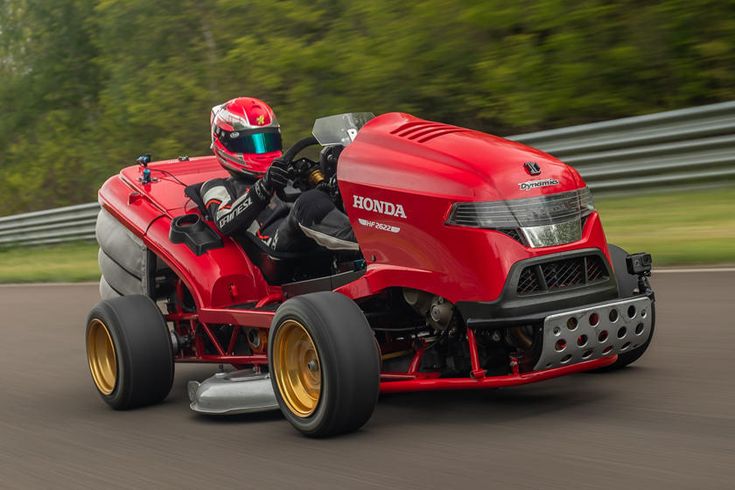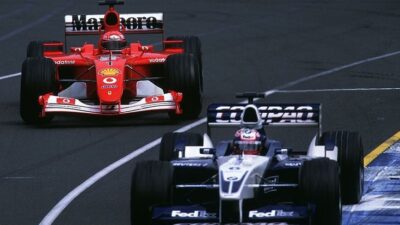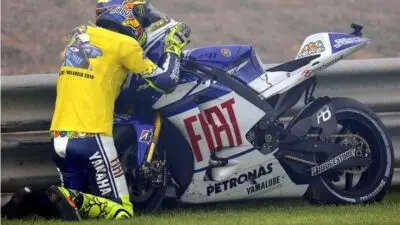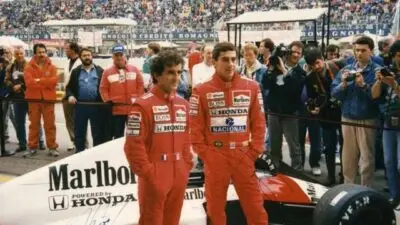People race everything from school buses to lawnmowers across the globe, creating some of the most entertaining and bizarre competitions imaginable. While Formula 1 and NASCAR dominate headlines, dozens of unusual motorsport series exist that showcase human creativity and competitive spirit in unexpected ways.
These unconventional racing series prove that drivers will compete in any vehicle available, from Japanese Dodge vans to massive European trucks weighing over 11,000 pounds. Dajiban racing started in 2015 when Japanese motorcycle racers began competing in their commercial transport vans, while European truck racing features professionally sanctioned competitions with vehicles producing up to 1,200 horsepower.
The appeal of these competitions often lies in their accessibility and grassroots nature. Many series emerged because traditional motorsport became too expensive for average enthusiasts, leading creative racers to find alternatives using everyday vehicles and minimal modifications.
Key Takeaways
- Unusual motorsport series range from lawnmower racing to professional truck competitions sanctioned by major racing organizations
- Many alternative racing formats developed as affordable alternatives to expensive traditional motorsport series
- These competitions exist worldwide and feature everything from school buses to specialized off-road vehicles in extreme terrain challenges
Understanding Unusual Motorsport Racing
Unusual motorsports represent a departure from traditional auto racing formats, often emerging from local communities and unique cultural needs. These racing series demonstrate how motorsport adapts to different vehicles, environments, and economic circumstances while maintaining competitive spirit.
Defining Unusual Motorsports
Unusual motorsports encompass any competitive racing that deviates from mainstream auto racing formats. These events typically feature unconventional vehicles, modified equipment, or unique racing rules.
Lawnmower racing began in 1968 when young English men sought cheaper alternatives to expensive motorsport. They removed cutting blades and welded engine covers for safety.
Common characteristics include:
- Non-traditional vehicles (school buses, tractors, three-wheelers)
- Budget-friendly entry costs
- Modified safety equipment
- Local community involvement
Dajiban racing started in 2015 when Japanese motorcycle racers began competing in their Dodge vans. The name comes from the English pronunciation of “Dodge Van.”
These motorsports often emerge when communities lack access to expensive racing series. They create opportunities for grassroots competition using available machinery.
Global Appeal and Local Traditions
Unusual motorsports reflect regional cultures and available resources. Local traditions shape how communities approach competitive racing.
School-bus racing in Bithlo, Florida recycles expired buses into racing machines. Buses cost under $5,000 at auction and their mass provides natural safety protection.
Regional examples include:
- Iceland: Formula Offroad using emergency response vehicles
- Oregon: Pig-N-Ford racing with Model T cars and live pigs
- India: Blind-man car rallies spanning over 20 cities
Formula Offroad began in Iceland during the 1960s when emergency services demonstrated their all-terrain vehicles. Harsh winter conditions created demand for capable off-road machines.
These events often serve multiple purposes beyond entertainment. They raise funds for charities, promote local businesses, or preserve automotive history through vintage vehicle use.
Comparison to Mainstream Racing Series
Unusual motorsports differ significantly from professional racing series in cost, accessibility, and competition structure. Traditional auto racing requires substantial financial investment and technical expertise.
The 24 Hours of LeMons caps spending at $500 for car purchase and modifications. This contrasts sharply with Formula 1 budgets exceeding millions of dollars.
Key differences:
| Aspect | Unusual Motorsports | Mainstream Racing |
|---|---|---|
| Entry Cost | $500-$5,000 | $50,000-$1,000,000+ |
| Vehicle Type | Modified everyday items | Purpose-built race cars |
| Safety Equipment | Basic modifications | Advanced safety systems |
| Prize Money | Minimal or none | Substantial payouts |
European Truck Racing represents a middle ground. The FIA sanctions this series, but it uses commercial trucks producing 1,200 horsepower instead of traditional race cars.
Unusual motorsports prioritize participation over perfection. They welcome amateur drivers and emphasize fun rather than professional development or commercial success.
Iconic Unusual Racing Series
Some racing series have become legendary for their bizarre rules and creative use of everyday machines. These competitions turn ordinary equipment into racing vehicles with surprisingly dedicated followings.
Lawnmower Racing
Lawnmower racing began in 1968 in West Sussex, England when young men grew frustrated with expensive motorsport entry costs. They needed a cheaper way to compete against each other.
The sport quickly spread to the United States. It became especially popular in Southern states like North Carolina, Missouri, and New Mexico.
Safety modifications are minimal on most lawnmowers used in competition. Racing organizers remove cutting blades and sometimes weld engine covers shut to prevent explosive failures.
Most races use completely standard lawnmowers. Drivers compete on grass courses or dirt tracks depending on the event location.
The sport attracts participants because of its low cost and accessibility. Anyone with a basic lawnmower can enter most competitions.
Pig-N-Ford Racing
Pig-N-Ford racing happens exclusively at the Tillamook County Fair in Oregon. This event combines vintage cars with live animal handling in a unique competition format.
Drivers must start Ford Model T cars from the early 1900s using hand cranks. They then grab a 20-pound live pig from trackside bins before completing each lap.
The rules are strict and complex. Each driver must complete three laps with three different pigs. The animals cannot escape from the vehicle during the race.
This bizarre racing format has its own detailed procedures that newcomers rarely learn. Most racing cars pass down through generations of local families.
The first person to finish three laps with three different pigs wins the competition.
Trailer Racing
Trailer racing involves modified camping trailers competing on racetracks at surprisingly high speeds. These competitions turn recreational vehicles into purpose-built racing machines.
Drivers remove most interior components to reduce weight. They add roll cages and racing seats for safety during competition.
European trailer racing series feature professional-level competition with sponsorship and organized championships. Teams spend significant money developing their racing trailers.
The vehicles reach speeds over 100 mph on road courses. Close racing creates exciting wheel-to-wheel action despite the unusual vehicle choice.
Some events allow only minor modifications while others permit extensive changes to suspension and engines.
Bizarre Off-Road and Extreme Competitions
Off-road racing pushes drivers beyond normal limits through challenging terrain and unique vehicle designs. These competitions feature everything from swamp-dwelling buggies to rock-climbing machines that defy gravity.
Swamp Buggy Racing
Swamp buggy racing transforms Florida’s wetlands into high-speed racetracks. Drivers pilot modified vehicles through knee-deep mud and water at the annual Naples Swamp Buggy Races.
Vehicle Requirements:
- Massive paddle tires for traction
- Elevated engines to avoid water damage
- Roll cages for driver protection
The buggies range from basic modified trucks to purpose-built machines worth thousands of dollars. Races take place on a half-mile course filled with water holes and mud pits.
Drivers must navigate through “the sippy hole” – a deep water section that has claimed many vehicles over the years. Winners traditionally get dunked in muddy swamp water by enthusiastic fans.
Formula Offroad
Formula Offroad originated in Iceland during the 1960s when emergency services demonstrated their all-terrain vehicles to raise funds. The sport evolved from mild rescue truck modifications to extreme unlimited class machines.
Two Main Categories:
- Modified Class: Stricter rules on vehicle modifications
- Unlimited Class: V8-powered buggies with nitrous oxide systems
Drivers compete against challenging courses rather than each other. Points are awarded based on distance traveled over demanding terrain. Penalties apply for backing up or hitting course markers.
The vehicles feature massive paddled tires and powerful engines designed to climb seemingly impossible obstacles.
Rock Bouncing
Rock bouncing takes vehicles up steep rock faces and boulder fields that seem impossible to climb. This American motorsport started in the southeastern United States among four-wheel drive enthusiasts.
Drivers attempt to “bounce” their heavily modified trucks up rocky hillsides using momentum and wheel spin. The vehicles feature:
- Massive tires (often 44 inches or larger)
- Powerful engines producing 500+ horsepower
- Extreme suspension travel
- Lightweight chassis construction
Competitions judge drivers on how far up impossible terrain they can climb before rolling backward. Many attempts end with spectacular crashes and rollovers that would destroy normal vehicles.
The sport requires precise throttle control and understanding of vehicle dynamics to maintain traction on loose rock surfaces.
Unconventional Truck and Bus Racing
Large commercial vehicles have found their way from highways and school routes into competitive motorsports. These massive machines create spectacular racing with unique challenges that traditional cars cannot match.
Stadium Super Trucks
Former NASCAR driver Robby Gordon created the Stadium Super Trucks series to deliver high-flying entertainment. The series features 600-horsepower V8 engines paired with trucks that have extremely soft suspensions.
The tracks include massive jumps that launch these vehicles through the air. Competitors pass each other on all sides and even jump over one another. This creates dramatic wheel-to-wheel action unlike any other motorsport.
The trucks have a high center of gravity and suspension designed for off-road use. This makes them difficult to control on paved surfaces. Crashes happen frequently due to these handling challenges.
Key Features:
- 600 HP V8 engines
- Pillow-soft suspension systems
- Custom-built jump sections
- World-famous racing circuits
The series travels to established race tracks around the world. Drivers must master both traditional racing skills and aerial control techniques.
School Bus Racing
Florida transformed retired school buses into racing machines in the town of Bithlo. These yellow buses get a second chance at life after their school transportation days end.
The buses cost less than $5,000 at government auctions. Their heavy construction makes them relatively safe for amateur racers. Drivers need minimal expensive safety equipment compared to lighter race cars.
The sport offers an affordable entry point into motorsports. Participants can compete without the huge budgets required for traditional racing. The buses’ massive size creates exciting close-quarters racing.
Most modifications focus on basic safety improvements. The original engines and transmissions typically remain unchanged. This keeps costs low while maintaining the authentic school bus character.
Heavy Truck Racing
Professional truck racing reaches its peak in Europe through the FIA European Truck Racing Championship. These competitions feature trucks from manufacturers like Volvo, MAN, Freightliner, and Scania.
The racing trucks produce up to 1,200 horsepower and over 4,000 pound-feet of torque. Their turbo-diesel engines can displace up to 13 liters. Despite weighing 11,000 pounds, they accelerate to 60 mph in just 5 seconds.
Technical Specifications:
- Maximum engine displacement: 13 liters
- Power output: Up to 1,200 HP
- Torque: Over 4,000 lb-ft
- Weight: Approximately 11,000 pounds
Racing slicks and specialized transmissions help these massive vehicles achieve surprising agility. The series maintains professional standards with strict technical regulations. India also featured truck racing with the Tata Prima T1 series, using 1040 HP engines in its final season.
Unique Three-Wheeler and Alternative Vehicle Challenges
Racing enthusiasts have transformed everyday vehicles into competitive machines, with three-wheelers leading some of the most entertaining motorsport series. From Italian auto-rickshaw competitions to massive agricultural equipment races, these unconventional challenges prove that any vehicle can become a racing machine.
Three-Wheeler Racing
Three-wheeler racing has emerged as one of the most accessible forms of motorsport worldwide. These lightweight vehicles offer unique handling characteristics that challenge drivers in ways traditional cars cannot.
The appeal lies in their simplicity and affordability. Most three-wheelers use basic engines and minimal technology. This keeps costs low for participants while maintaining exciting competition.
Key characteristics of three-wheeler racing include:
- Lightweight construction (typically under 1,000 pounds)
- Simple mechanical systems
- High power-to-weight ratios
- Challenging cornering dynamics
Drivers must master weight transfer techniques specific to three-wheeled vehicles. The single rear wheel creates unique braking and acceleration challenges. Cornering requires different approaches compared to four-wheeled vehicles.
Many countries have developed their own three-wheeler racing cultures. India’s auto-rickshaw races draw massive crowds in urban areas. Thailand hosts regular tuk-tuk competitions on closed circuits.
Piaggio Ape Racing
Piaggio Ape racing began in 2012 as a marketing strategy for the company’s new Ape Cross Country three-wheeler pickup. The series quickly evolved into a legitimate grassroots motorsport phenomenon across Italy.
The races feature Le Mans-style standing starts on go-kart tracks. This creates dramatic opening laps as drivers sprint to their vehicles before racing begins.
Race specifications typically include:
- Engine: Stock Piaggio engines or modified sportsbike units
- Weight: Approximately 400-500 kg
- Power: 8-25 horsepower (up to 100hp for modified versions)
- Track type: Karting circuits
Famous modifications include Loris Rosati’s Lightning McQueen-themed Ape equipped with a 100-horsepower sportsbike engine. Such builds demonstrate the creative potential within the series.
Valentino Rossi has endorsed the series, praising its grassroots appeal and pure racing enjoyment. The low costs allow amateur racers to compete without major financial commitments.
Italy now hosts regular championship rounds throughout the racing season. The series has inspired similar competitions in other European countries with strong three-wheeler cultures.
Combine Harvester Racing
Combine harvester racing transforms massive agricultural machines into unlikely racing vehicles. These competitions typically occur at county fairs and farming festivals across rural communities.
The massive size of combine harvesters creates unique spectacle value. These machines can weigh over 30,000 pounds and stand 12 feet tall. Racing them requires specialized driving skills and mechanical knowledge.
Technical challenges include:
- Steering response: Extremely slow compared to conventional race vehicles
- Braking distances: Require hundreds of feet to stop safely
- Speed limitations: Top speeds rarely exceed 25 mph
- Visibility issues: High seating position but limited peripheral vision
Safety regulations mandate roll cages and fire suppression systems. Drivers must wear full racing suits despite the relatively low speeds. Track barriers need reinforcement to handle potential impacts from such heavy machinery.
Most competitions use elimination formats rather than traditional lap racing. Head-to-head drag races work better given the machines’ handling limitations. Some events include obstacle courses featuring hay bales and agricultural equipment.
The racing community consists primarily of farmers and agricultural equipment operators. This creates authentic competition between people who operate these machines professionally. Prize money often goes toward local agricultural charities or equipment funds.
Comparisons with Mainstream Motorsport Series
While unusual motorsport series offer unique entertainment value, they share surprising similarities with premier racing championships in terms of technical innovation, cultural impact, and competitive structure. These parallels reveal how grassroots creativity often mirrors the evolution patterns seen in Formula 1, NASCAR, endurance racing, and electric vehicle competitions.
Formula 1 Innovations
Formula 1 represents the pinnacle of motorsport technology and regulation sophistication. The FIA enforces strict technical specifications that drive innovation in aerodynamics, power units, and safety systems.
F1 teams spend hundreds of millions annually on research and development. This creates a technology transfer effect where innovations filter down to road cars and other racing series.
Key F1 characteristics:
- Hybrid power units producing over 1000 horsepower
- Advanced aerodynamics with ground effect floors
- Sophisticated telemetry and data analysis
- Global championship spanning 23 races
Many unusual racing series adopt simplified versions of F1’s structure. Stadium Super Trucks use LS V8 engines producing 600bhp, following F1’s pursuit of maximum performance within regulations.
The championship points system used in F1 appears in modified forms across amateur series. Even lawn mower racing clubs organize seasonal competitions with standings and awards.
The Culture of NASCAR
NASCAR built its identity around stock car racing accessibility and fan engagement. The series emphasizes close wheel-to-wheel competition on oval tracks with minimal technological barriers between teams.
Stock car racing culture celebrates mechanical simplicity over high-tech solutions. Teams use spec engines and standardized components to control costs and maintain competitive parity.
NASCAR’s cultural elements:
- Fan accessibility: Drivers remain approachable to supporters
- Regional identity: Tracks represent local communities
- Tradition: Long-standing rivalries and family legacies
- Entertainment value: Crashes and drama are part of the appeal
This approach influences unusual series design. Piaggio Ape racing uses simple three-wheelers that anyone can understand and modify. The grassroots nature mirrors NASCAR’s origins in bootlegger culture.
Tata Prima T1 Truck Racing adopted NASCAR’s spec series format. All trucks used identical chassis and 1040bhp engines to ensure fair competition.
Le Mans and Endurance Races
Endurance racing tests both machine reliability and driver stamina over extended periods. Le Mans runs for 24 hours straight, demanding different strategies than sprint races.
Multiple driver lineups share cars during endurance events. Teams must balance speed with mechanical preservation to complete the full distance.
Endurance racing features:
- Duration: Races last 6-24 hours
- Strategy complexity: Fuel consumption and tire management crucial
- Driver changes: Multiple pilots per car
- Manufacturer competition: Road car relevance important
Piaggio Ape racing incorporates Le Mans-style starting grids where drivers run to their vehicles. This theatrical element adds excitement to grassroots events.
World Rally Championship and Dakar Rally represent endurance racing’s off-road cousin. These events span days or weeks across challenging terrain. Many unusual series adopt similar multi-stage formats.
Evolution of Formula E and Electric Racing
Formula E launched in 2014 as motorsport’s electric vehicle showcase. The series promotes sustainable racing technology while maintaining competitive entertainment value.
Electric powertrains offer instant torque delivery and silent operation. This changes race dynamics compared to internal combustion engines.
Formula E innovations:
- Battery technology: Rapid charging and energy density improvements
- Regenerative braking: Energy recovery systems
- Urban circuits: Street racing in major cities
- Fan engagement: Social media integration affects race outcomes
ESkootr Championship represents electric racing’s newest frontier. The series uses scooters with Williams Advanced Engineering batteries and dual 6kW motors reaching 100kmph.
This demonstrates how unusual series often pioneer new technologies before mainstream adoption. Electric scooter racing may influence future urban mobility solutions.
DTM and Super GT have experimented with hybrid systems. MotoGP introduced electric support classes. These developments show electric racing’s growing influence across motorsport disciplines.
Frequently Asked Questions
Unusual motorsports span from lawnmower racing that started in West Sussex to Japanese Dajiban van competitions and European truck racing championships. These events often feature modified everyday vehicles, unique safety requirements, and deep connections to local communities.
What are some unique motorsport events that take place globally?
Lawnmower racing began in 1968 in West Sussex, United Kingdom when young English men sought cheaper alternatives to expensive amateur motorsport. The sport later spread to the United States, becoming popular in North Carolina, Missouri, and New Mexico.
Pig-N-Ford racing takes place at the Tillamook County Fair in Oregon. Drivers must hand-crank start Ford Model T cars from the early 1900s, then grab a 20-pound live pig and complete three laps with three different pigs.
Dajiban racing started in Japan in 2015 when motorcycle racers began competing in their Dodge commercial vans. The name comes from the English pronunciation of “Dodge Van.”
School-bus racing occurs in Bithlo, Florida, where retired yellow school buses get a second life on the track. The buses cost less than $5,000 at auction and their heavy weight provides natural safety protection.
How do traditional racing rules vary in unconventional motorsport series?
The 24 Hours of LeMons enforces a strict $500 spending cap for car purchase and modifications. This endurance race prioritizes fun over conventional racing standards, allowing everything from Mazda Miatas dressed as fighter planes to stretch limousines on track.
Figure-eight train racing requires pull cars to have working engines but disabled brakes. Follow cars must have functioning brakes but no working engines, creating unique coordination challenges between drivers.
Stadium Super Truck racing allows competitors to pass on the left, right, and even jump over each other. The 600-horsepower trucks feature extremely soft suspensions and compete on tracks with massive jumps.
Formula Offroad drivers compete against the course itself rather than each other. Scoring depends on distance traveled over demanding terrain, with point deductions for backing up or hitting course markers.
Can you list international racing events that feature non-standard vehicles?
The European Truck Racing Championship is run by the FIA and features entries from Volvo, MAN, Freightliner, and Scania. These 11,000-pound trucks produce up to 1,200 horsepower and can reach 60 mph in 5 seconds.
Piaggio Ape Racing began in 2012 when Piaggio created a racing series for their three-wheeler pickups. The series features Le Mans-style starting grids and has gained global popularity.
Blind-Man Car Rally has been hosted in over 20 Indian cities since 2006. Visually impaired drivers navigate using Braille guidebooks while their co-drivers rely on non-visual senses to determine vehicle orientation.
Formula Offroad originated in Iceland during the 1960s when emergency services demonstrated their all-terrain vehicles. The sport now features V8-powered buggies with nitrous oxide systems and massive paddled tires.
What are the safety regulations for atypical motorsport competitions?
Lawnmower racing requires removal of cutting blades for safety. Engine covers are sometimes welded shut to prevent explosive failures that could injure drivers.
The 24 Hours of LeMons mandates basic safety criteria despite the low budget requirements. All vehicles must meet minimum safety standards regardless of their $500 purchase and modification limit.
School-bus racing relies on the vehicles’ natural mass for driver protection. The heavy construction reduces the need for expensive safety equipment required in lighter racing cars.
Dajiban racing modifications focus on reliability rather than extreme performance. Common upgrades include external oil coolers, lighter wheels, and lowered suspensions for extended circuit sessions.
How do unusual motorsport events impact the local cultures where they are held?
Pig-N-Ford racing has become deeply embedded in Tillamook County culture. Newcomers rarely enter the sport because cars pass down through generations of local families, creating strong community bonds.
School-bus racing in Bithlo, Florida represents environmental recycling by giving retired buses new purpose. The events provide affordable entertainment while keeping old vehicles out of scrapyards.
Formula Offroad grew from Iceland’s harsh winter conditions and emergency service needs. The sport reflects the country’s relationship with extreme terrain and weather challenges.
Lawnmower racing maintains its original philosophy of accessible motorsport. The low costs continue to provide entry-level racing opportunities for people who cannot afford traditional motorsport expenses.
What innovations have emerged from obscure motorsport series?
Stadium Super Truck racing pioneered the combination of high-powered trucks with massive jumps on professional circuits. This format influenced other jumping-based motorsport competitions worldwide.
The 24 Hours of LeMons proved that endurance racing could work with strict budget limits. The series demonstrated that creativity and engineering skill matter more than expensive equipment.
Dajiban racing showed how commercial vehicles could be effectively modified for circuit racing. The budget-friendly approach influenced grassroots motorsport development in Japan and beyond.
European Truck Racing pushed diesel engine technology to new limits. The 13-liter turbo-diesel engines producing over 4,000 pound-feet of torque advanced commercial vehicle performance.











